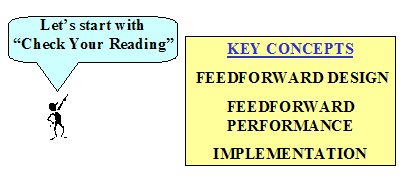
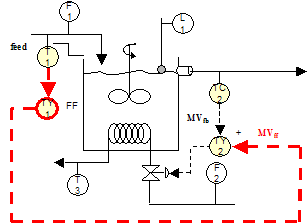
Chapter 15 Feedforward Control
Check Your Reading Study Questions Thought Questions
The questions will be categorized according to the key concepts in the chapter.
| FEEDFORWARD DESIGN CRITERIA | IMPLEMENTATION |
| FEEDBACK PRINCIPLE | RATIO CONTROL |
 |
|
| Check Your Reading |
Solidify the Concepts |
| 15.1 Feedforward can be applied to compensate for any measured disturbance. |
DESIGN CRITERIA |
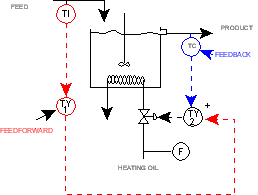
| 15.2 Which of the following appear in the feedforward design criteria? |
DESIGN CRITERIA |
| 15.3 Only ONE measured variable can be used for feedforward control. |
DESIGN CRITERIA |
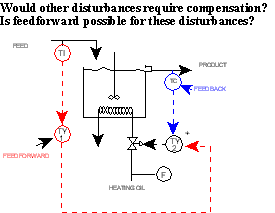
| 15.4 Flow ratio control can be achieved by feedforward principles, but not feedback only. |
RATIO CONTROL |
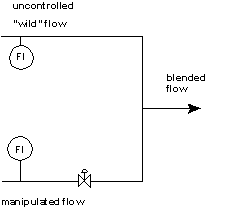
| 15.5 All measured disturbances should be used for feedforward control |
DESIGN CRITERIA |

| 15.6 The general feedforward design equation using linearized models is given in which of the following expressions? |
DESIGN CRITERIA |
| 15.7 A major deficiency of feedforward control is |
FEEDBACK PRINCIPLE |
| 15.8 The design goal for feedforward control is |
DESIGN CRITERIA |